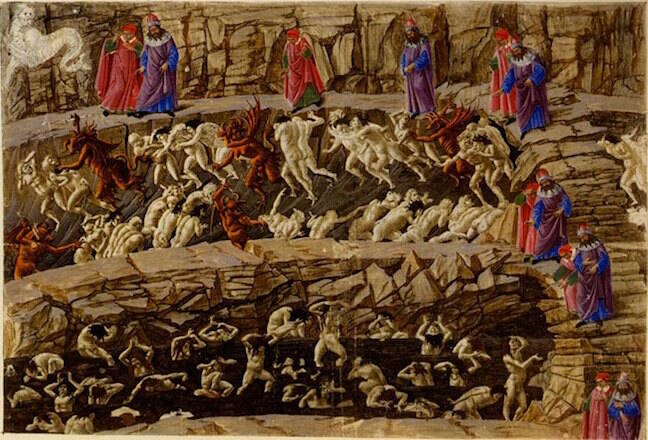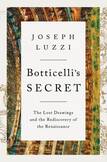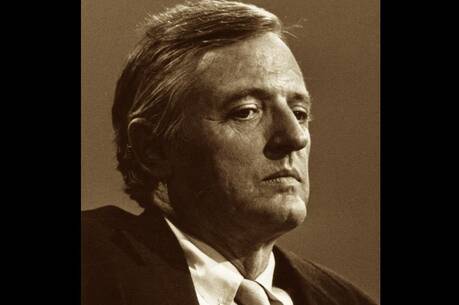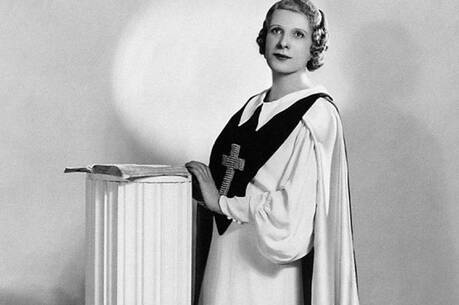
Review: When Botticelli illustrated Dante
In the beginning, it was a project to illustrate all 100 cantos of what is arguably the greatest of all European poems. Then it was a magnificent portfolio of unfinished drawings hidden away for centuries. Then, in 1882, a shrewd German scholar orchestrated the purchase of 85 of them from a London bookseller and packed them off to Berlin as part of the Kaiser’s campaign to glorify the only recently unified Germany. Now it is a collection unequally dispersed among three great museums.
The story of Sandro Botticelli’s creation of a series of drawings to accompany Dante’s “The Divine Comedy” is just the beginning of the tale. Trying to determine what happened to the drawings after Botticelli’s death is complicated, puzzling, marked by gaps and subject to scholarly disagreement. With Botticelli’s Secret: The Lost Drawings and the Rediscovery of the Renaissance, Joseph Luzzi, professor of comparative literature at Bard College, has written a fascinating narrative that tells the story of the drawings and seeks to revise our understanding of the phenomenon traditionally known as the Renaissance.
Three of the greatest artists of the Renaissance were said to have undertaken the task of illustrating “The Divine Comedy”: Botticelli, Michelangelo and Leonardo.
Luzzi excavates the cultural production of works that have at last come to be appreciated as more than a series of mere illuminations of a great poem. The portfolio of Botticelli’s drawings comprises the existential meditations of one talented artist on the work of another. Luzzi’s research is extensive, his approach accessible, his understanding substantial, his accomplishment considerable.
“The Divine Comedy,” a poem of over 14,000 lines, substantially written and completed by Dante in exile (1302-21), became well-known very quickly. Eight hundred manuscript copies circulated in Italy before the first printed edition (in the late 15th century), and that does not reckon its widespread popularity in oral traditions. But “The Divine Comedy” was not, as Luzzi suggests, “a preferable alternative to the word of God,” but rather a complement to it. In the mid-to-late 15th century, Dante’s poetry gave way to Petrarch’s verse in the estimation of Italy’s scholars and intellectuals; but it retained its privileged position with other poets and artists.
Three of the greatest artists of the Renaissance were said to have undertaken the task of illustrating “The Divine Comedy”: Botticelli, Michelangelo and Leonardo (the last two, probably not, though Kenneth Clark believed that several of Leonardo’s drawings kept in the Royal Collection at Windsor were intended for that purpose). Of the three, we now have only the drawings of Botticelli.
Trained in the bottega (workshop) of Fra Filippo Lippi, Botticelli won the favor and patronage of Lorenzo de Medici, the powerful, cultivated ruler of 15th-century Florence. Botticelli’s fortunes were intricately linked to those of the Medici family; so long as they remained in power, Botticelli flourished. With the death of Lorenzo (April 8, 1492) and that of his ally, Pope Innocent VIII (July 25, 1492), Botticelli’s commissions dwindled. And when the artist fell under the influence of the rabble-rousing Dominican Fra Savonarola, who preached a severely ascetic doctrine denouncing works of art, Botticelli all but gave up painting, according to Giorgio Vasari (1511-74), the Florentine artist sometimes considered the “father of art history.”
Here, as elsewhere, Vasari is not altogether reliable, but something had changed. Certainly Botticelli’s “Mystic Nativity” (1501) does not compare to his “Primavera” (c. 1480) and “Venus” (c. 1485). If indeed Botticelli became a follower of Savonarola after his martyrdom in 1498, we don’t know how many of Botticelli’s works were cast into the flames in the “Bonfire of the Vanities” on Shrove Tuesday in 1497 or 1498.
When Luzzi calls Botticelli an “impressively learned painter,” he revises the historical portrait and restores the great painter’s reputation as a meditative reader of texts.
What about the “Secret” of this book’s title? Luzzi uses “secret” not to describe something deliberately hidden away or obscured but to indicate something private, not public. These illuminations for Dante’s poem undertaken by Botticelli during his years of public acclaim were a private endeavor. Ironically, they would be hidden away for many years afterward.
Botticelli was not a dilettante but a serious reader of Dante’s poetry. He had studied with Cristoforo Landino (1424-98), a poet, humanist and author of an important commentary on “The Divine Comedy”; he was a close friend of the great scholar Manetti, considered the greatest contemporary commentator on the poem. When Luzzi calls Botticelli an “impressively learned painter,” he revises the historical portrait and restores the great painter’s reputation as a meditative reader of texts.
In 1480, at the age of 35, Botticelli began the project, originally conceived of as a series of 102 illustrations—one for each canto, except for “Inferno XXXIV”(two drawings), plus a “Map of Hell.” Actually, Botticelli embarked on two projects: one, printed for mass production to accompany the text of “The Divine Comedy,” edited by Landino; and a second, limited to just one hand-lettered text, commissioned by Lorenzo di Pierfrancesco, a ward of Lorenzo de Medici (1449-92) known as “Il Magnifico,” who was a Florentine politician, scholar and patron of artists, including Michelangelo and Botticelli.
The first project was an abysmal failure: The first edition of the Landino volume had no engravings at all, while subsequent editions included only Botticelli’s engravings for Parts I to XIX of “Inferno.” Poorly executed by an incompetent workman, these engravings nonetheless were part of all other editions published between 1482 and 1487. Botticelli completed the second project sometime after the death of Il Magnifico. It was a remarkable portfolio of skillfully rendered drawings, etched with a silver-point stylus on white vellum (goatskin parchment, 18½ by 12½ inches). Though Botticelli evidently intended that all his drawings be fully colored, only three have some color, while another (a map) is fully colored.
Debates about the extent of Botticelli’s personal involvement ensued—and are not resolved yet. Yet for some, Kenneth Clark’s conclusion 50 years ago is persuasive: “this great enterprise [was]...too near his heart” for Botticelli to allow assistants to have a hand in the project; even the retracing in ink of the lines (the vellum had not been properly prepared) was done by Botticelli himself, in Clark’s estimation.
Scholars who have examined the manuscripts have noted that the later drawings are incomplete, slighter than the earlier efforts. Some speculate that these alterations were due to the pressures of meeting a deadline; others, like Clark, suggest that Botticelli felt unequal to the task—that what Dante felt could not be rendered in language, Botticelli felt he could not represent in lines.
Some scholars suggest that Botticelli felt unequal to the task—that what Dante felt could not be rendered in language, Botticelli felt he could not represent in lines.
When this magnificent edition was “completed,” it was likely presented to the French king Charles VIII when he entered Florence en route to conquering Naples (1495). This would explain why all the drawings were kept in France for decades. Largely because of Vasari’s dismissive comments about the artist, the great secret of Botticelli’s drawings accompanying the text of Dante’s poem remained secret for two centuries. In Luzzi’s words, “both the artist and his Dante project fell into the dustbin of history.”
Decades later, enter the enigmatic Queen Christina of Sweden (1626-89). Succeeding to the throne at the age of 4 but unable to rule on her own until she reached adulthood (1644), Christina was extraordinarily well-educated, learned in philosophy and religion, and fluent in eight languages. She was a generous patron of the performing arts (opera, ballet, theater) and an avid collector of books and manuscripts. At her invitation, Descartes established an academy in Sweden.
In 1651, Christina suffered a nervous collapse and abdicated shortly thereafter, before becoming a Roman Catholic on Christmas Eve, 1654. Though she traveled frequently and far, she established residence in Rome, where the pope gave her an apartment in the Vatican. In 1658, Christina bought eight of Botticelli’s Dante drawings from an unknown Parisian bibliophile. After her death (1689), Pope Alexander VIII bought her entire library, including the Botticellis, which remain in the Vatican to this day.
In 1803, 85 of the drawings, sold by the Parisian bookdealer Claudio Molini, became part of the collection of the 10th Duke of Hamilton, who amassed an impressive private collection of paintings, sculpture, manuscripts and objets d’art. Two scholars visited Hamilton Palace, viewed the drawings and concluded they were not done by Botticelli. Some years later, to pay off debts, the debt-ridden 12th duke sold the portfolio to a London dealer.
In 1882, the 85 drawings, for sale in a catalog issued by the London dealer Ellis and White, were set to be auctioned off at Sotheby’s. Friedrich Lippmann, director of prints at the Royal Museum of Berlin, examined them and determined they were by Botticelli (and kept his own secret until he persuaded the Kaiser’s government to buy the lot). Despite strenuous efforts by the eminent art critic John Ruskin to raise the funds necessary to keep them in England, Lippmann won the prize. The drawings were bought and shipped to Berlin in November 1882. Divided between two museums, all but one (now lost) remain in Germany.
Joseph Luzzi has brought the wisdom of many years of study to fruition in Botticelli’s Secret. His time in Florence and at Bernard Berenson’s spectacular villa outside the city, I Tatti, now the Harvard University Center for Italian Renaissance Studies, has enhanced his appreciation for Dante and his world. Luzzi now brings that knowledge to a contemporary general reader in a narrative at once informative, reliable and accessible. It is at times too accessible, given an irritating stylistic tic of using 21st-century jargon with phrases like “infernal trash talk,” “the editorial dream team,” “celebrity tweet” or “her champagne dreams exceeded her beer budget.” While Botticelli’s Secret was not intended to be a scholarly monograph in the tradition of John Pope-Hennessy’s Sandro Botticelli: The Nativity, it is, nonetheless, too often marked by elements of an informal level of diction not in keeping with its subject or audience.
Botticelli’s Secret helps us to appreciate properly a profoundly synergistic encounter between two renowned artists, one meditating on the work of the other.
Of greater concern are other matters. First, Luzzi pays scant attention to the drawings themselves. Though a dozen or so are reproduced in small, not altogether clear form, none are reproduced in actual size and clarity; moreover, none are discussed in detail. Botticelli’s Secret would have profited from close critical examination, if only of a few representative drawings.
Those who seek that attention would do well to consult Kenneth Clark’s scholarly volume, The Drawings by Sandro Botticelli for Dante’s ‘Divine Comedy’ (1976), with its densely informative 24-page introduction and economical, evocative description of many drawings. Fresh photographic images of all the extant drawings, approximating the size of the originals, enhance the text. Though more recent scholarship has corrected Clark on several minor points (e.g., Hein-Thomas Altcappenberg: Sandro Botticelli: The Drawings for the Divine Comedy, 2000), his erudition and unflappable style have held up.
Second, and of greater import, is Luzzi’s intended objective of redefining the term “Renaissance,” by its very nature a difficult if not futile task. That aim has prompted Luzzi to create a solid narrative of political, religious and cultural life in 15th-century Florence. He has judiciously drawn upon some of the best sources for history (Michelet, Burckhardt, Gilson, Goldthwaite) and for art (Pater, Ruskin, Gombrich, Warburg, Pope-Hennessy, Berenson, Clark).
Unfortunately, Luzzi’s discussion drops this thread of redefinition for substantial portions of the book. The matter is only summarily recapitulated in the final pages of Botticelli’s Secret. It does include a curious, not directly relevant, digression about the Harlem Renaissance, an important moment in American cultural history, to be sure, and worthy of discussion elsewhere, but of negligible connection to Luzzi’s real subject.
Luzzi’s narrative, though interesting and well-documented, simply does not sustain his thesis that in Botticelli’s drawings we have “a group of unfinished drawings that would shape the way we understand the monumental term Renaissance.”If such a claim is to be fully convincing it needs revision and more evidence. In the absence of such evidence, perhaps “might well enhance the ways” instead of “would shape” would have been a better choice of words.
Nevertheless, by contextualizing Botticelli within the milieu of 15th-century Florence and chronicling the creation and disposition of Botticelli’s magnificent suite of drawings, Luzzi has made a substantial, significant contribution to cultural studies. Botticelli’s Secret helps us to appreciate properly a profoundly synergistic encounter between two renowned artists, one meditating on the work of the other. It is time for the secret to be told, and Luzzi has done this.










